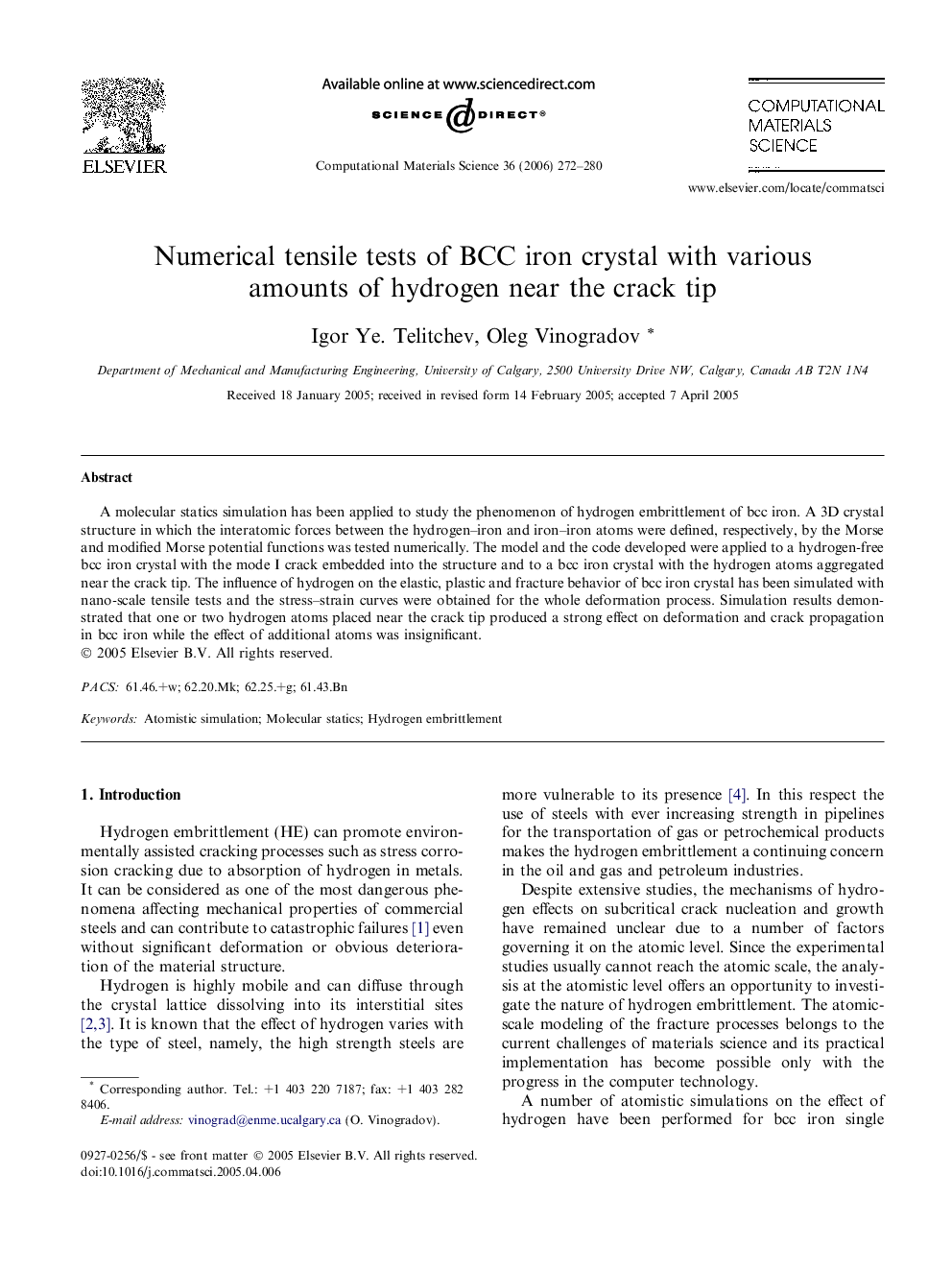| Article ID | Journal | Published Year | Pages | File Type |
|---|---|---|---|---|
| 1564141 | Computational Materials Science | 2006 | 9 Pages |
Abstract
A molecular statics simulation has been applied to study the phenomenon of hydrogen embrittlement of bcc iron. A 3D crystal structure in which the interatomic forces between the hydrogen-iron and iron-iron atoms were defined, respectively, by the Morse and modified Morse potential functions was tested numerically. The model and the code developed were applied to a hydrogen-free bcc iron crystal with the mode I crack embedded into the structure and to a bcc iron crystal with the hydrogen atoms aggregated near the crack tip. The influence of hydrogen on the elastic, plastic and fracture behavior of bcc iron crystal has been simulated with nano-scale tensile tests and the stress-strain curves were obtained for the whole deformation process. Simulation results demonstrated that one or two hydrogen atoms placed near the crack tip produced a strong effect on deformation and crack propagation in bcc iron while the effect of additional atoms was insignificant.
Keywords
Related Topics
Physical Sciences and Engineering
Engineering
Computational Mechanics
Authors
Igor Ye. Telitchev, Oleg Vinogradov,
